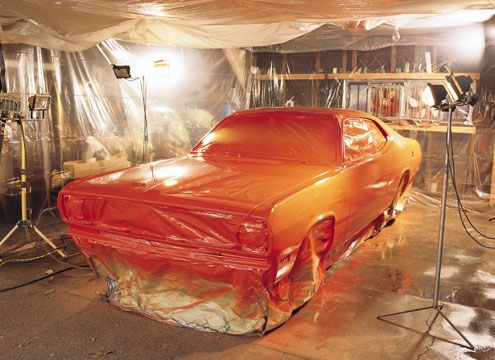
Having a car with nice paint is both the biggest reward and the biggest hassle in car crafting. Between searching for a paint shop that will do a complete repaint on an older car, getting the job done to your satisfaction in a timely fashion, and paying for it, having a car painted can be a harrowing experience. But theres no reason to let all that stand between your car and a great paint job. After all, you know the old saying: If you want something done right, youve got to do it yourself. And you really can if youve got the time and patience to do it right.
The most daunting challenge for the first-time painter is understanding the various steps of the process: prep, primer, blocking, and the final spray job and detailing. Taken as a whole, it seems like an insurmountable hurdle, but each step by itself takes no more than a couple of days. Pacing yourself, you can get the job done in a reasonable amount of time if you have a plan and stick to it. We painted this 70 Duster in just about a month from the time the bodywork was started until it was color-sanded and ready to drive out of the garage.
It may be the oldest cliché in the trade, but theres no escaping the truth that the final result of any paint job is only as good as the prep work. The Duster was hiding its fair share of damage, with some rust down low in the quarters, and plastic body filler higher up from previous repairs. From the doors forward, the paint was mostly original, but numerous past repairs had left the rear of the car a patchwork of partial repaints. Some were skillfully done, while other were amateurishly overloaded with filler. We took the time to get the bodywork right before moving on.
Another point we cant hammer home hard enough is that you really need to check your local environmental regulations regarding mixing and spraying paints at home. The local fire department or autobody supply store is probably the best place to start. But even if you stop short of actually spraying the paint yourself, the techniques shown here will at least allow you to get the car ready for a pro to lay down the paint, saving you a ton of money. Weve assumed you already know how to strip a car of all its trim, bumpers, mirrors, grille, and other items that need to be removed before you paint it, so lets get down to the nitty-gritty details.